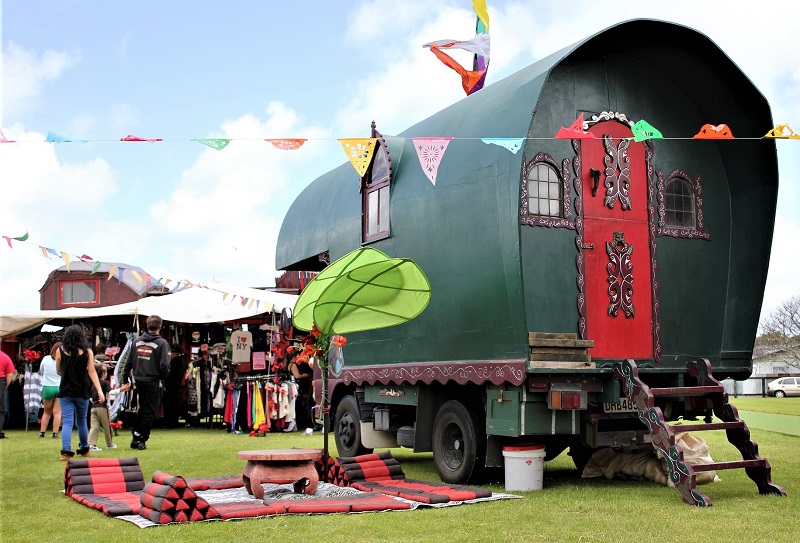
A movement that is more than just about architecture, the Tiny House Movement is a social movement in which people adopt minimalism and live simpler lives in a smaller space.
Built on the foundations of sustainability and environmental consciousness, the popularity of tiny houses is gaining momentum all across the world. A group of people decided to decrease their living expenses by living in smaller homes with fewer belongings and found that it adds to their happiness!
What is a tiny house?
There is no single description of what a tiny home is, but most houses are under 400 square feet in area. These designs generally contain a living area, kitchen, and bathroom.
A bedroom loft accessible by stairs or a ladder is a common feature in many of these homes. Families with children usually also have a sleeping area or nook downstairs.
Tiny homes use green building materials to create sustainable structures. As a result, many people who prefer an environment-friendly lifestyle, elect to live in these homes.
Reasons to live in a Tiny House:
Tiny homes allow environmentalists to embrace a way of life that integrates fun and modernity into social responsibility. With this lifestyle, a lack of space is never an obstacle. You can even have a tiny house closer to your workplace and urban life.
You can even choose to live nearer to the woods to get away from the bustle of the city. Or you can elect to live in a mobile home and get the best of both worlds!
These homes are not exclusively a part of the hipster lifestyle anymore. Many youngsters are choosing this lifestyle because they want to make a difference and to live economically. On top of that, they can be a part of a fun community and enjoy a little adventure in their daily lives.
Financial Benefits
The most significant advantage of tiny houses is that they are economical. They help minimize the initial cost of owning or renting a conventional home.
Building these houses can cost less than the price of most cars today. And as they use the same materials as any conventional home, they hold the same quality and have a similar lifespan. So, despite the low cost, if built correctly, these homes can provide quality living for decades.
And because the houses are so much smaller, the cost of home maintenance is also significantly lower.
The cost of electricity, the gas bills will be a lot more affordable, in addition to the already reduced property taxes and rent. A smaller house will lead to reduced consumption. Less space will decrease frivolous purchases, and minimal living will become the norm.
Environmental Benefits
As mentioned above, the movement itself was founded on the principles of sustainability. Making a positive and lasting impact on our environment is one of the primary goals for the people who elect to live in tiny houses. The movement itself might not be enough to reverse the damage already done to the environment, but it can stop further damage from being done. Less consumption obviously leads to less waste and fewer landfills. Smaller homes also mean less energy is utilized for everyday living.
Minimalism- An Added Benefit
Everybody has stuff— things people purchase on a whim and items they are reluctant to throw away/recycle. ‘Tiny living‘ forces us to leave behind the mindset that having more things is necessary.
We can then accept that things we want and things we need are indeed two different sets. And that we can make do with what is required. It helps us realise on what is really important in life.
Leaving material things behind can bring us longer-lasting joy and satisfaction.

Who can be a part of the Tiny House Movement?
Anyone can enjoy the advantages that the tiny home lifestyle provides. But the movement is ideal for — younger people wanting a simple lifestyle, couples who do not have kids, and new retirees.
Like everything else, the movement is not ideal for everyone. Families with kids might not be interested in tiny living for many reasons. Younger kids need space — for their things and for them to move around safely. Older kids and their parents need privacy and personal space.
With or without kids, there are also other practical difficulties with living tiny, like insurance concerns and storage issues. Many find these difficult to navigate and might be overwhelmed by them.
There can also be a sense of uncertainty or impermanence that many people find unsuitable for themselves. The sudden shift can be dramatic for some people, which might be distressing initially.
But on the other hand, the financial benefits mentioned earlier can help people live comfortable lives. In today’s economy, having adequate savings at the start of adult life and at the beginning of retirement is remarkably challenging. With the financial burden taken away, people will be free to adapt to the sense of community that the tiny home movement can offer.
Younger people feel drawn to tiny homes because it is a modern way of living. It allows them to be free and financially secure while nurturing the environment they will continue to live in. And to begin with, they are unlikely to have amassed many things so early on.
Retirees can finally leave their material worries behind and get in touch with nature. Living a simpler lifestyle can also bring the occupants closer together and experience true happiness in their life.
If you would like to find out more about tiny homes and sustainable living, check out the other articles on this blog!
